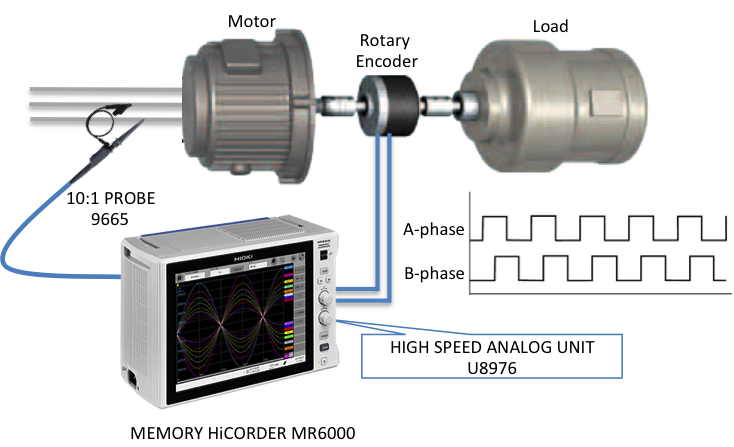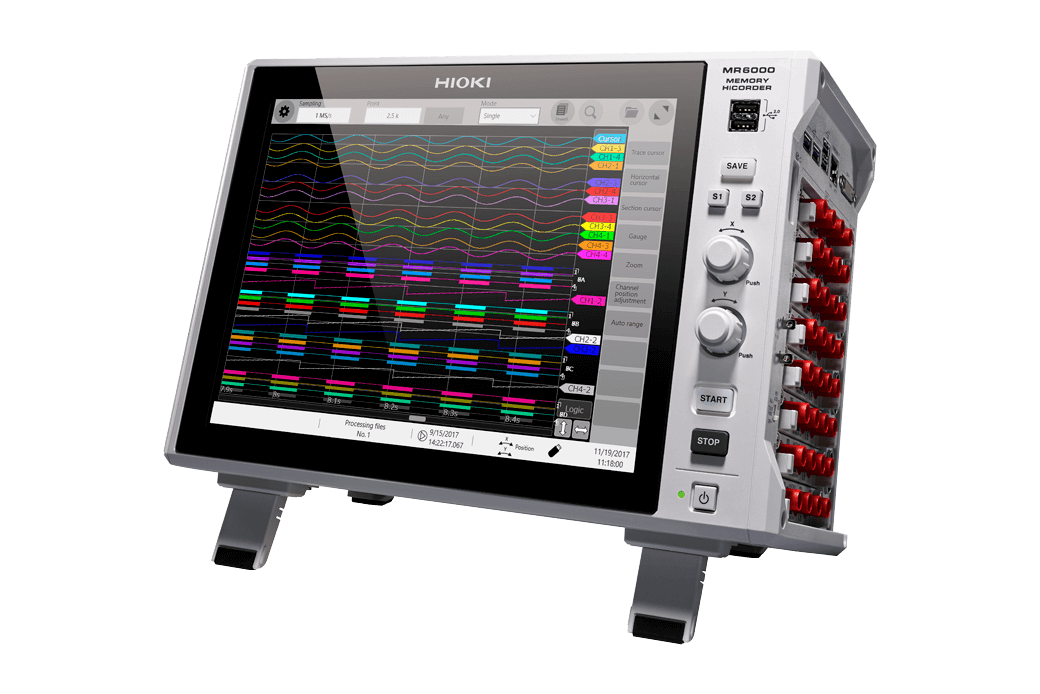Record Encoder Pulse Output to Verify Motor Operation
Use the MR6000 to capture an encoder’s A- and B-phase pulse output waveforms via high-speed sampling.
How are Rotary Encoders Used and Their Operation Verified ?
Encoders are frequently used to monitor motor parameters such as speed, rate and rotational direction by converting rotary motion into a digital signal and then viewing the waveforms on data acquisition equipment. This is especially important when installing an encoder for the first time to verify that it is working properly and that its output matches the specifications of the motor, or when troubleshooting motor issues. By monitoring the two phases that are connected to the encoder, you can confirm duty cycle as well as a proper phase relationship between phases A and B.
Why is High-speed Sampling Important?
Oftentimes a high-resolution recorder that can sample quick motor changes is indispensable, especially when feedback from the encoder is necessary to ensure absolute synchronization of the motor with connected equipment. Let’s take, for example, a 3000 rpm motor, which is equal to 50 rotations per second. If you’d like to monitor the encoder’s rotation with 1° of resolution, the encoder would need to output 360 pulses per rotation. One second of a 3000rpm motor would translate to 18,000 pulses, resulting in a per pulse width of 55μsec. To capture such a narrow pulse cycle, you would need a recorder that can sample at 1MS/sec. Motor movement that requires even more precise control, such as those used for medical equipment or advanced robotics, may need to be monitored at an even higher resolutions of 0.1°, or even 1/100 of a degree, resulting in a narrower pulse that would require a sampling speed of 10MS, 50MS or 100MS/s.
A Comprehensive Solution
The Memory HiCorder MR6000 and High Speed Analog Unit U8976 present a comprehensive solution by delivering high-speed isolated measurement of up to 200MS/s across multiple channels, enabling you to definitively capture minute anomalies in encoder pulses over long observation periods, signals that could be missed if you use a general oscilloscope due to the latter's short recording time. Simultaneous multi-channel testing lets you monitor multiple encoders at the same time, as well as conduct other electrical tests, to verify the ability of the encoders to properly trace the operation of the motors, and quickly and effectively analyze issues when they occur.

Additional Convenient Features
Use the MR6000’s Concierge function after measurement to easily search for waveforms that differ from a reference wave in order to quickly identify pulse anomalies or gaps that could be attributed to a faulty encoder, incorrect installation, or to shorted wires, loose couplings, or other system related issues.

